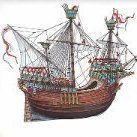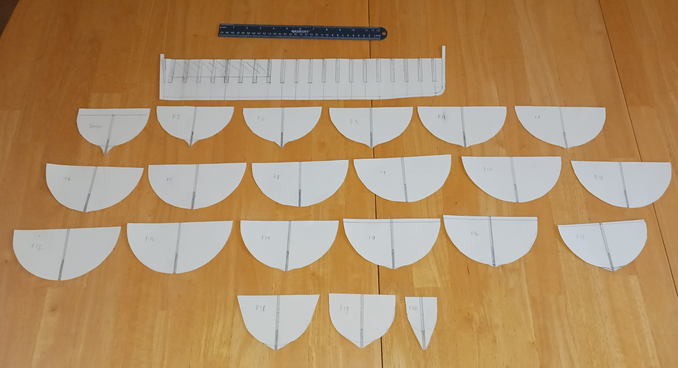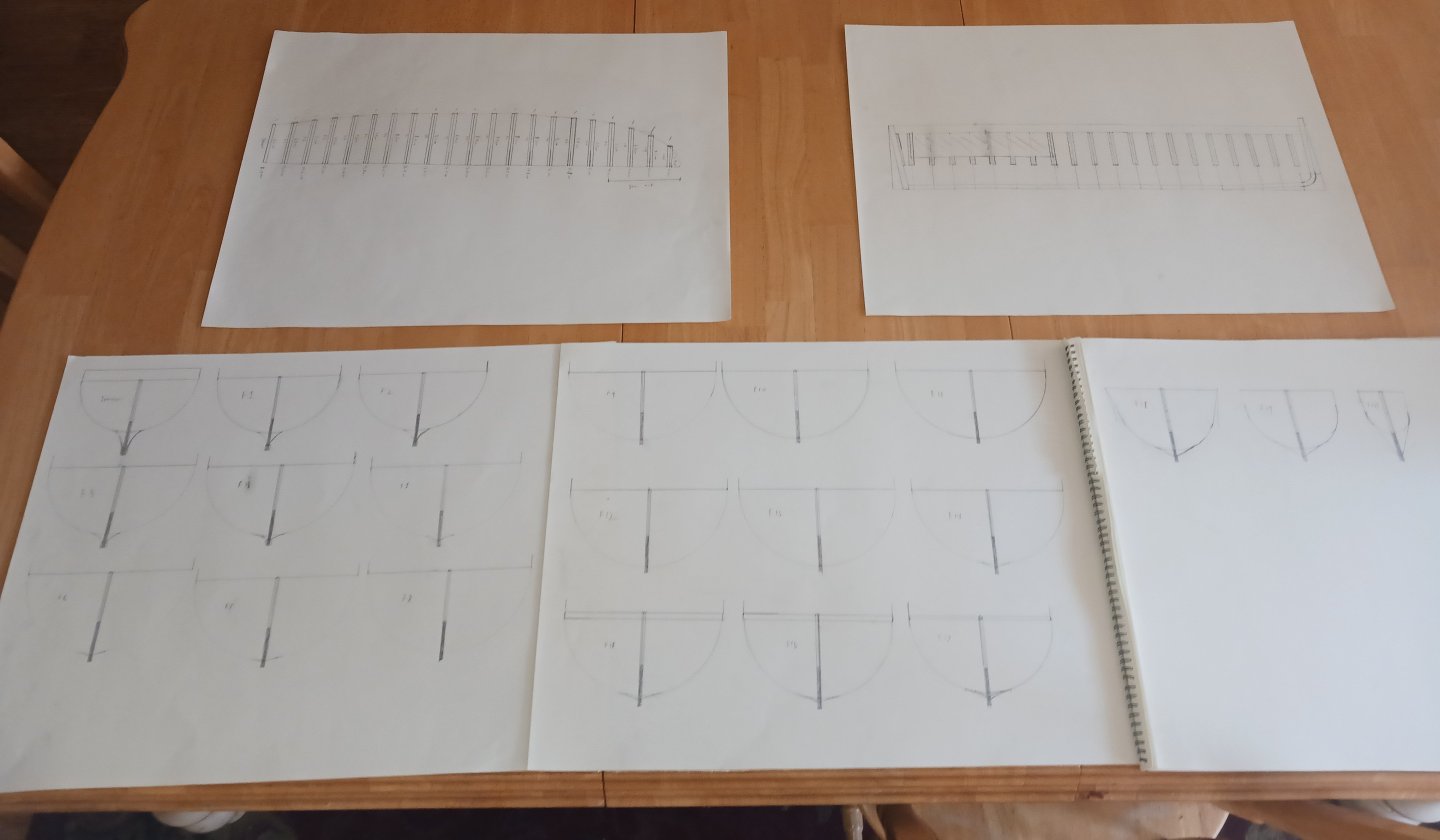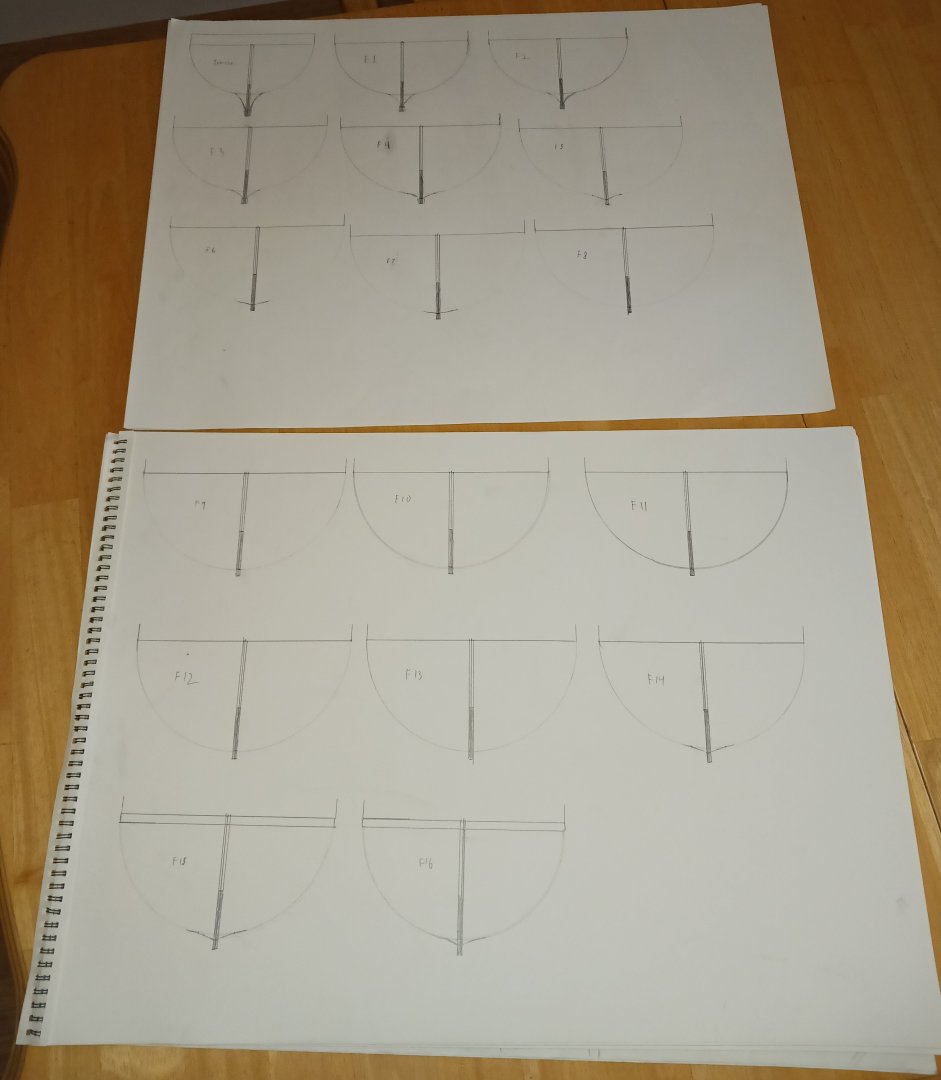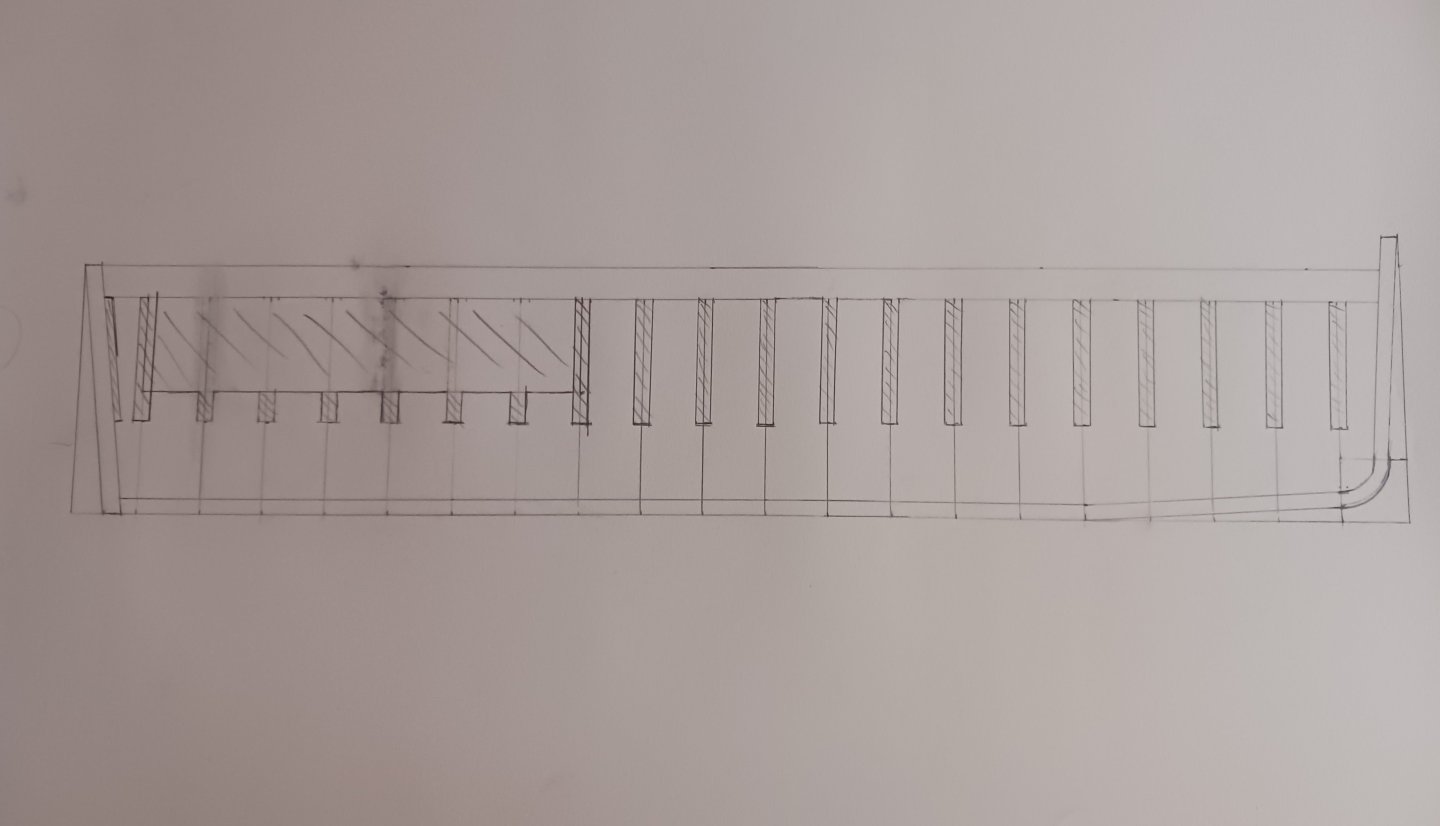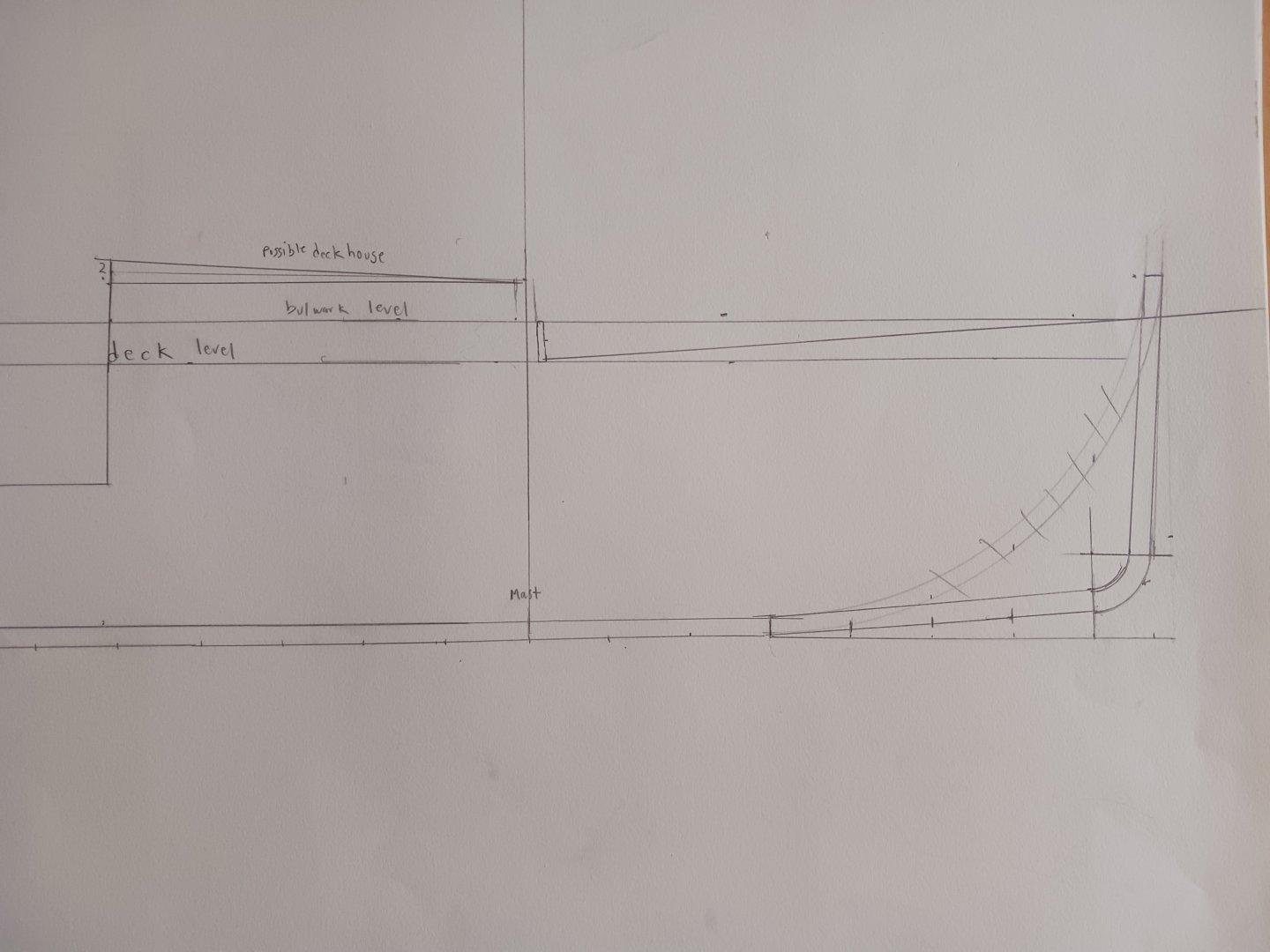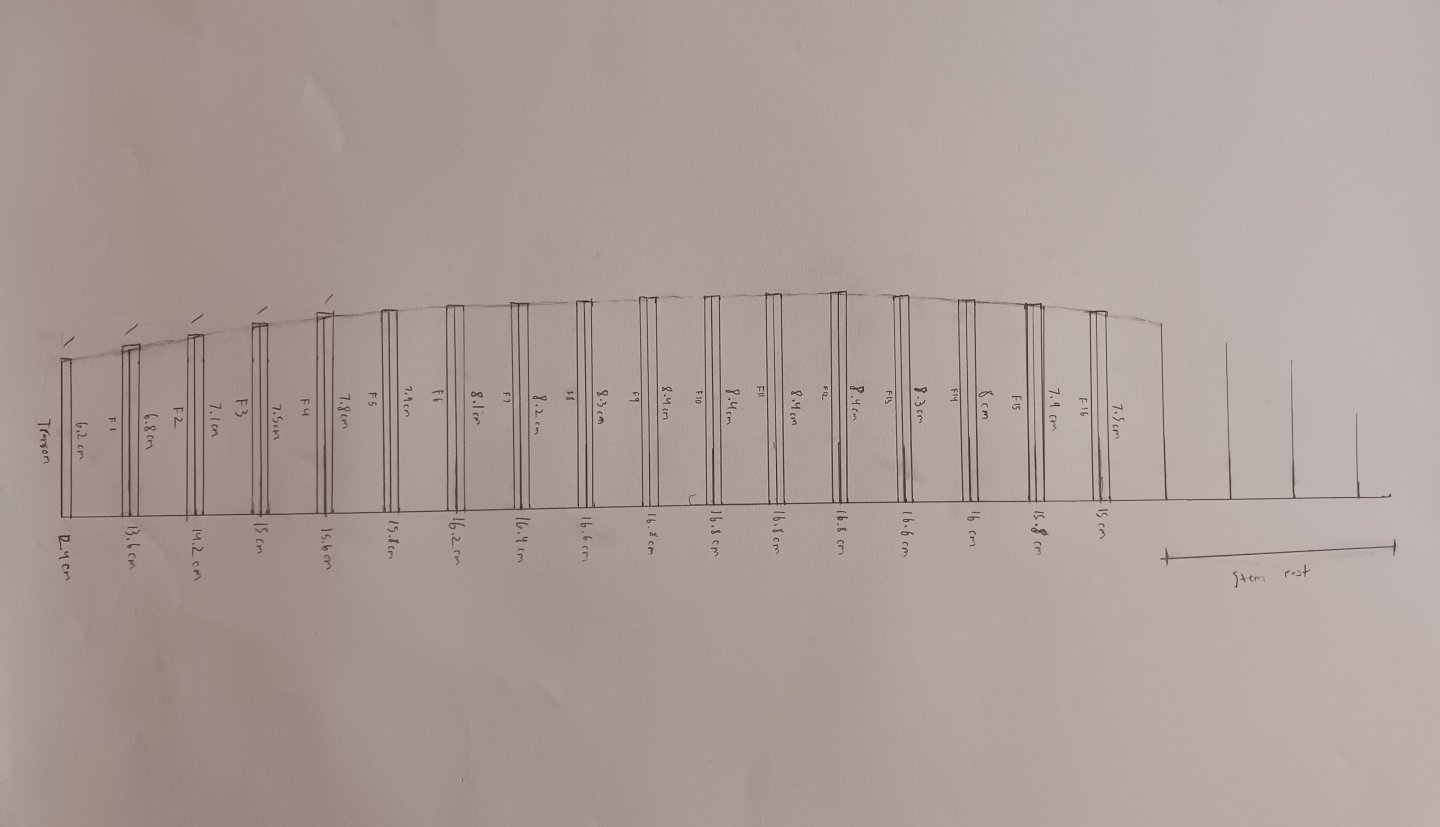-
Posts
1,392 -
Joined
-
Last visited
Content Type
Profiles
Forums
Gallery
Events
Everything posted by Ferrus Manus
-
Today marks a major milestone in the build. I am DONE with the designs for the keel and frames. Designing the keel and frames has taken me more than two months, which is about the same amount of time I spend on most small models. The next step will be to cut everything out and test fit it together to get a good idea of what the boat's lines will end up looking like. I can guarantee the framing won't take nearly as long as the designs did, and I plan to have the framing done (framing, sanding, filler blocks) by the end of June, with the boat ready to be planked.
-
I'm pretty sure we also have a disc sander that I could use to fair the frames. It depends on the application and how useful it'll be. I designed the frames so that the only fairing I have to do is what's absolutely necessary. Don recommended me a hand planer to take off greater amounts of material. Might as well sand/fair my sorrows away in the summer night air (I live in the northern hemisphere unlike you and Steven). We have quite a few metal files, which I'm sure will rip through the frames like butter, then go back in with a sanding sponge for the finer sanding and the more sensitive parts, like the bottom of the frames. Most shipwrights fair by hand, which is more precise and has less likelihood to take off too much material.
-
If all else fails, I can probably just buy some low quality scroll saw and hope it survives long enough to cut out the keel and frames.
-
Thing is, it's dusty as hell, obscured by a bunch of bubble wrap and unused lengths of baseboard and cardboard floor covers for painting and sheetrock and even more baseboards. I'm not even sure it's been used in my lifetime. It'll be interesting to try out, though. Assuming it even works, it's the only power tool I'll need, save for a drill.
-
Alright guys, here are the rest of the keel frames. There are only four more frames to do, and those will be the stempost frames. I might take a different design path for those, as the modified semicircle shape won't suffice for a frame with a significant length and very little width. After I'm done making the frames, I'll cut them and the false keel out and slot them together to see if I'm happy with the overall hull shape.
-
Looking back, I will be going with my original plan to plank the interior of the bulwarks. This will be achieved by placing the upper half of the main wale above deck level, to support and align the bulwark stanchions. Scuppers will be drilled into the upper part of the wale. lower and upper part of the bulwarks will be in-filled with, presumably, wood planking material. This will form the cap rail as well, being made up of two thin planks inside and outside the top of the bulwarks, filled and sanded. The eyebolts (?) for the shrouds will be inserted into the top of the bulwarks. The making up of the bulwarks (and all the planking in general) will occur after the deck is put in.
-
I don't think there's a problem with talking about shipbuilding. I personally value the discussion about the specifics of the Mary Rose. However, this is Baker's build log, and he gets to decide what is necessary and what is not. The intention (as I interpret it) is not to ban you or discredit your valuable research, but simply to get along with the build. Personally, I am excited to see the forecastle! I hope no offense is taken from this response; none is intended. Cheers!
-
This is one of the only good views of the deck of the Lizzie Annie, apart from the obstruction of the bow by the massive genoa sail. Look at the distinct absence of a cockpit. The designers worked around this by angling the tiller upward. This boat is small enough to be controlled by a man on the tiller, rather than requiring tiller gear. For that reason, I might be making the executive decision to exclude the cockpit on the Devin Collins. The main reason for this is to avoid unnecessary complications in the build, and simplify the framing. The lack of a cockpit leaves more room for other things on the boat, such as crates of ale or books for the deckhands to read while they wait for a large windjammer to enter the Bristol Channel. This cutter has a very small cockpit and no deckhouse: While this cutter has no cockpit and a tiny deckhouse: The recurring theme I notice in the realm of pilot cutters is a distinct lack of uniformity.
-
You can prevent this by using filler blocks in some places, which also give the planking a greater surface area to adhere to.
- 60 replies
-
- vanguard models
- cutter
-
(and 1 more)
Tagged with:
-
An accurate build is a good looking build. When it comes to ships, usually accuracy equates to beauty pretty well.
- 60 replies
-
- vanguard models
- cutter
-
(and 1 more)
Tagged with:
-
This is the newly designed false keel, based on the revised drawings of the profile view of the cutter.
-
Would you like to do some research on the real ship?
- 60 replies
-
- vanguard models
- cutter
-
(and 1 more)
Tagged with:
-
The plan shown was not my own. It was a representation of what I wanted my bow to look like. I redesigned my own bow to reflect the online image. That picture is likely a photocopy, my designs are all drawn on paper with pencil. Go back and look at the original side profile of the boat. I hope that answers your question.
-
Thank you for the recommendation. I will have to look into it. While this is a pilot cutter, other similar boats like the Lizzie Annie are equally valuable resources. The shallow hull sets the Devin Collins apart from other pilot cutters, and from what I've seen, all pilot cutters are unique.
-
Why don't you start the build log for the Sherbourne and do some research while you wait? That's what I do.
- 177 replies
-
- Perseverance
- Modellers Shipyard
-
(and 1 more)
Tagged with:
-
Another possibility that avoids the brass pin inserts is to cut a square hole at the edge of the planking at regular intervals (probably every other frame, will be determined after planking is on-ship) and insert the stanchions into the cutouts in the deck. A third option is to use JB-Weld on the bottoms of the stanchions. The first plank on the stanchions, directly above the wale, will be glued to the wale as well as the stanchions, increasing the structural soundness of the entire system.
-
The drawings you're looking at are not my drawings or plans, but rather a representation of how the bow should look on my vessel.
-
I have reevaluated the positioning of the main wale on the boat. I have also come up with a different way of attaching the stanchions for the upper bulwarks that does not require the wale to be above deck-level. The deck will be planked off-ship (this is non-negotiable as I already have working plans for that) and laid down on the tops of the frames. Then, with each frame still exposed, the stanchions will be positioned on top of the deck. This opens up new avenues for the scupper designs. Some smacks have an open area at deck level for water runoff, while others have proper scuppers. I will likely go the latter route. The Lizzie Annie has an unplanked area at deck level... ...while the cutter Kochi has proper scuppers. The plan is to drill holes and insert brass pins connecting the stanchions to the hull. The reason for this, apart from the scupper issue, is that the interiors of these cutters' upper bulwarks usually remain unplanked. Thus, the stanchions are to remain exposed when the upper bulwarks are planked and painted. I have rarely ever seen the main wale above deck level on an English smack.
-
This is the redesigned bow: Eventually, I will have to do the design for the false keel cutout. The cutouts for the keel and frames will be glued on 1/8 inch and 1/4 inch thick wood, and cut out via a band saw.
-
Now, I am thinking of redesigning the stempost and lengthening the keel. It's not too late to do this, as I haven't designed the stempost frames yet. I will likely redesign it to reflect the bow shapes of the era. The straight-vertical bow will help with the planking process.
-
This is the pilot cutter Pellew, a vessel that is significantly larger than either the Lizzie Annie or the Devin Collins. A point of note is the topmast stay and the fact that the jib is still on a traveler. This eliminates the need for furling ropes or manropes on the bowsprit. The second stay and taller mast both exist because the Pellew has a standing gaff topsail. I am sticking with a jackyard topsail as is flown on the Lizzie Annie.
-
I have now made width measurements for all of the keel frames. The stempost frames will be more complicated owing to the fact that the heights of each frame are different. I will likely design these frames by hand, without the use of a compass.
About us
Modelshipworld - Advancing Ship Modeling through Research
SSL Secured
Your security is important for us so this Website is SSL-Secured
NRG Mailing Address
Nautical Research Guild
237 South Lincoln Street
Westmont IL, 60559-1917
Model Ship World ® and the MSW logo are Registered Trademarks, and belong to the Nautical Research Guild (United States Patent and Trademark Office: No. 6,929,264 & No. 6,929,274, registered Dec. 20, 2022)
Helpful Links
About the NRG
If you enjoy building ship models that are historically accurate as well as beautiful, then The Nautical Research Guild (NRG) is just right for you.
The Guild is a non-profit educational organization whose mission is to “Advance Ship Modeling Through Research”. We provide support to our members in their efforts to raise the quality of their model ships.
The Nautical Research Guild has published our world-renowned quarterly magazine, The Nautical Research Journal, since 1955. The pages of the Journal are full of articles by accomplished ship modelers who show you how they create those exquisite details on their models, and by maritime historians who show you the correct details to build. The Journal is available in both print and digital editions. Go to the NRG web site (www.thenrg.org) to download a complimentary digital copy of the Journal. The NRG also publishes plan sets, books and compilations of back issues of the Journal and the former Ships in Scale and Model Ship Builder magazines.


